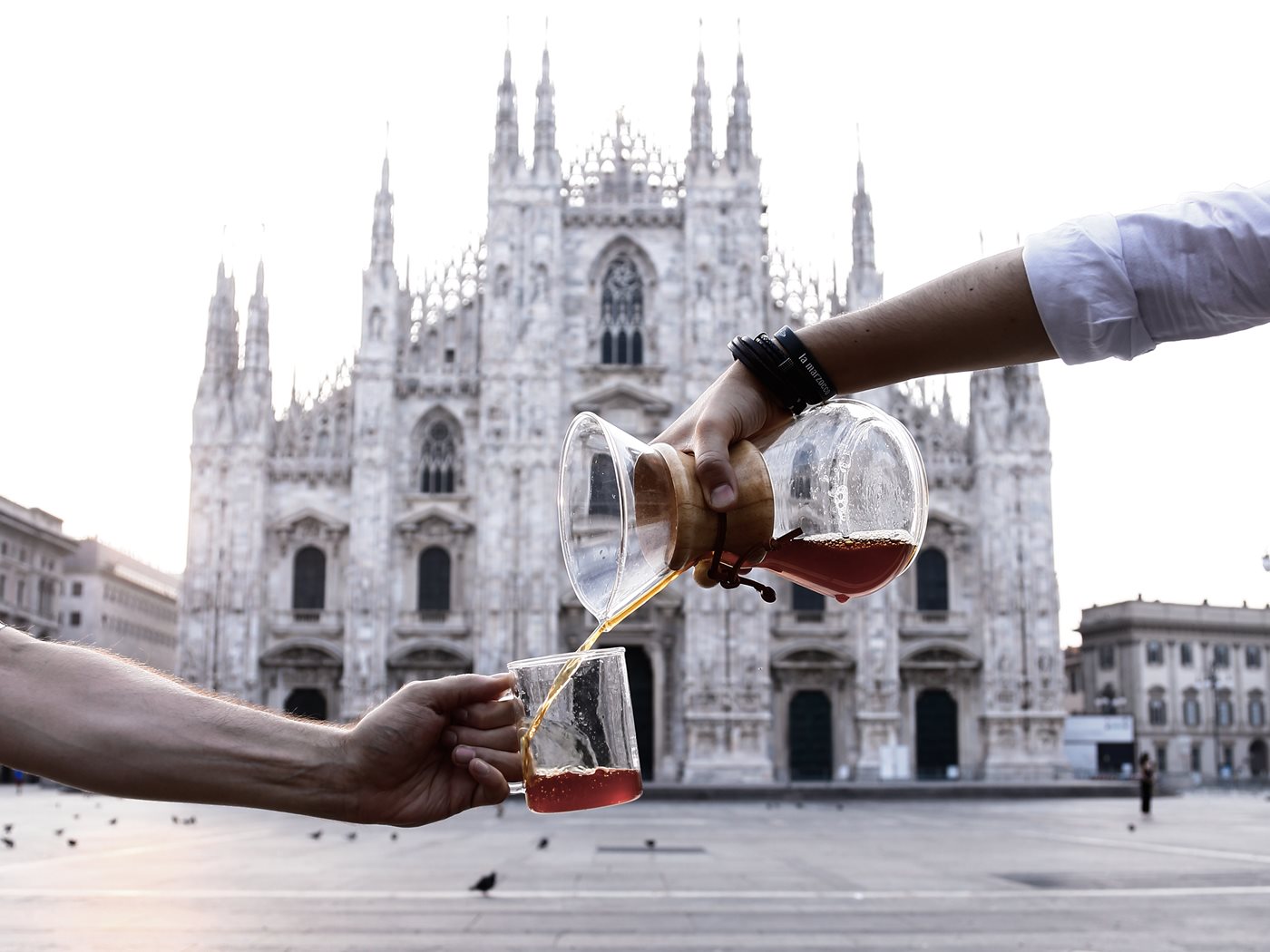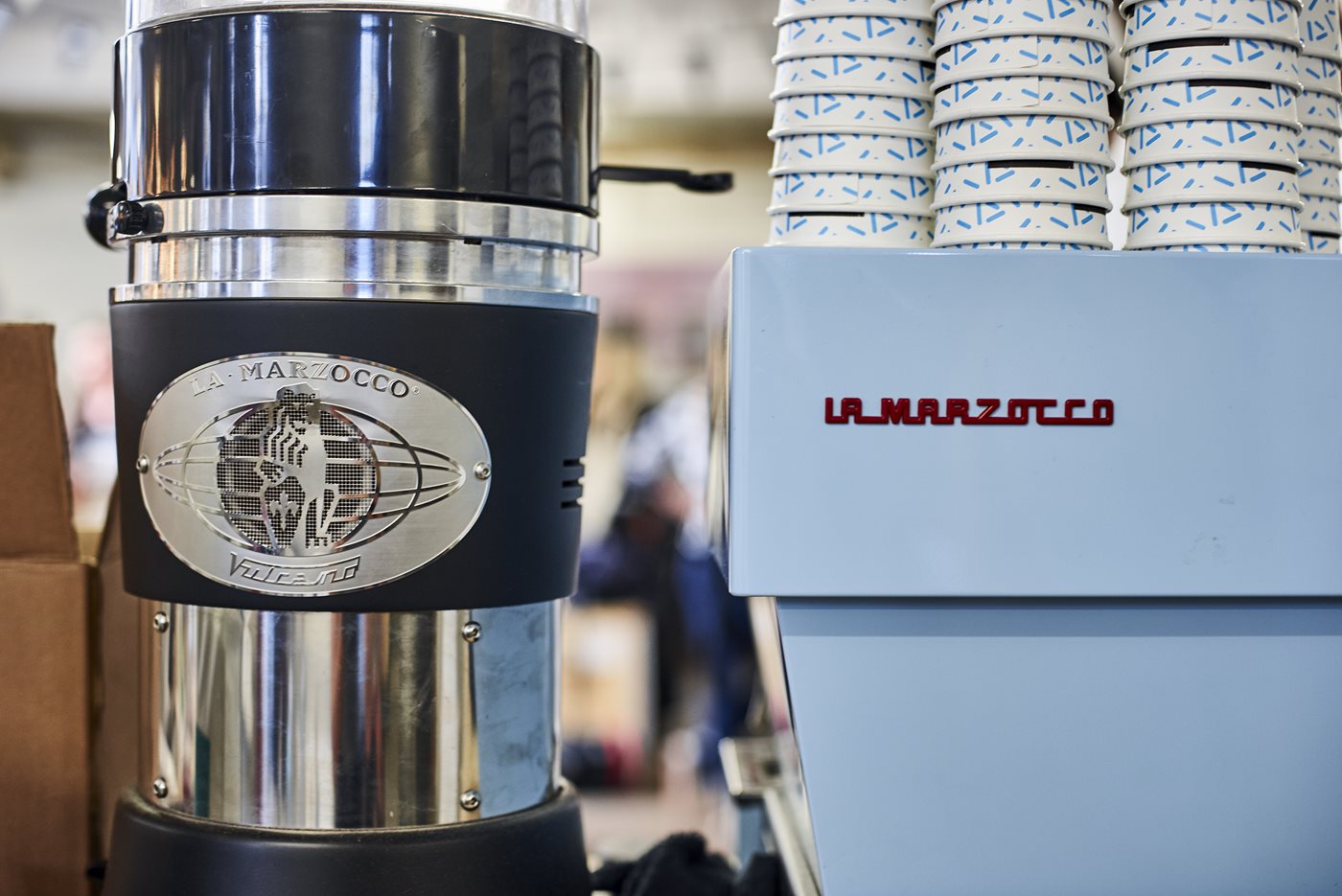Italy is home to espresso. Italians drink a cup of coffee (when they say “coffee” they always refer to espresso) in less than a minute, at the bar counter. In recent years, however, something has changed thanks to the advent of the so-called third wave coffee, a movement that appreciates coffee as an artisan or craft beverage.
One questions the origins, the quality, how coffee beans have been processed and by whom. Let’s take a look at 3 popular tools and how to use them at best to make sure you can enjoy a caffeinated day at work and impress colleagues and clients likewise!
.jpg.aspx?lang=it-IT)
Best fit for… a morning stand-up meeting that needs perking-up.
Difficulty: Quick and simple. There’s nothing more fool-proof than this trusty plunge brewer.
Tools: Cafetière, 60g coffee (medium to coarse ground), 1 litre of freshly boiled water (filtered or bottled water that’s just off the boil, ideally 91-94° C), a grinder, digital scales, a spoon and a timer.
Method: Grind the coffee to a medium to coarse grind size. Place the Cafetière on scales, add coffee, reset the scales to zero and gently pour in water to achieve the right ratio (1 litre in this case). Leave to steep for three to four minutes, stirring the crust on the surface with a spoon half way through; this will make it fall back down. Scoop off the floating grounds (if necessary), put the lid on and plunge.
The damage? Brew kit starts from 70
The golden ratio: 60g of coffee per litre of water or 1/17 ratio
Interesting facts: The French Press, as the name suggests, was invented in 1852 by two Frenchmen - a Parisian goldsmith and a merchant: Mayer and Delforge. Its worldwide success, however, is due to an Italian, Attilio Calimani, who in 1929 improved the design and operating system of the French Press.
.jpg.aspx?lang=it-IT)
Best fit for... the noble coffee geek who doesn’t do sharing.
Difficulty: Doable with a degree of accuracy; it’s also great for travelling and easy to clean.
Tools: AeroPress coffee maker, AeroPress filters, 16g coffee (fine ground), 250ml freshly boiled water (91-94° C), a grinder, scales, stirrer, timer and a pouring kettle (optional).
Method: Lock filter paper into the brewer and run hot water through to rinse and remove paper taste. Place mug on the scales, and sit the AeroPress on top, filter side first. Add the coffee and tare the scales. Let the boiling water sit for 30 seconds after the kettle has boiled, start your timer, add the water and stir vigorously for a few seconds. Insert the plunger to create a vacuum. After around one minute, remove from the scales and slowly press down for thirty seconds.
The damage: from €95
Interesting facts: The AeroPress was invented in 2005 by Alan Adler, the American inventor who also invented the Aerobie flying ring.

Best fit for… Top client to impress? Your new Chemex skills will do the trick.
Difficulty: It’s all about practice; the grind, contact time and weight of coffee are key to success.
Tools: 6-8 Cup Chemex, Chemex filters, 40g coffee (coarse grind), 680g water (91-94°C), a grinder, scales, stirrer, timer and a pouring kettle.
Method: add the filter to the Chemex neck, rinse with hot water and discard. Place on scales, add the fresh coffee and tare. Start the timer, add just enough water to cover the coffee (approximately 50ml), and take a break while ‘the bloom’ happens. After 30 seconds, carefully pour in rest of the water in circular motion, avoiding direct contact with the filter. Give the Chemex a gentle swirl and leave to drip until the coffee grounds look dry. The whole process should take less than 4 minutes, otherwise the grind is too fine. Bin the filter, pour and enjoy.
The damage: from £110
Intersting facts: Chemex was invented in 1941 by Peter J. Schlumbohm, a German chemist and is by far the dripper with the classiest design. Thanks to its clean lines and shape, it is among the design objects displayed at the renowned MoMa, the Museum of Modern Art of New York.

Oh boy, you want an espresso at work? If you’ve fallen out with your local café and need to DIY, the Linea Mini from La Marzocco is your last hope. Here’s some tips to tide you over.
Difficult: Yes.
Tools: A good quality espresso machine (such as the La Marzocco Linea Mini), 18g of coffee (fine espresso grind), an espresso grinder, filtered or bottled water, a tamper, scales and milk or nut milk (optional).
Method: The best way to start is by asking your roaster for suggested measurements. It all starts with mastering the art of dialling in your espresso grinder, which requires a masterclass in itself. Once clued-up, clean the espresso basket with a dry cloth. Place the handle on the scales to weigh the coffee as you add it, then tamp to make sure it’s even. Flush water from the machine and add the cups on top of small scales. Lock the handle in brew for around 28 seconds. When dripping has finished, the espresso is ready.
The damage: Just under €4,500 for a dream kit.
Interesting facts: The espresso machine was invented in 1884 in Turin by Angelo Moriondo, to optimize the quantity of cups prepared in its bars. It was called "espresso" because the coffee could be prepared in just about 45 seconds, i.e. “quickly”.
THE Linea Mini is the star of the Roaster Village where some of Italy's most renowned roasters will be preparing and serving up their best espresso to visitors - click here to find out more.